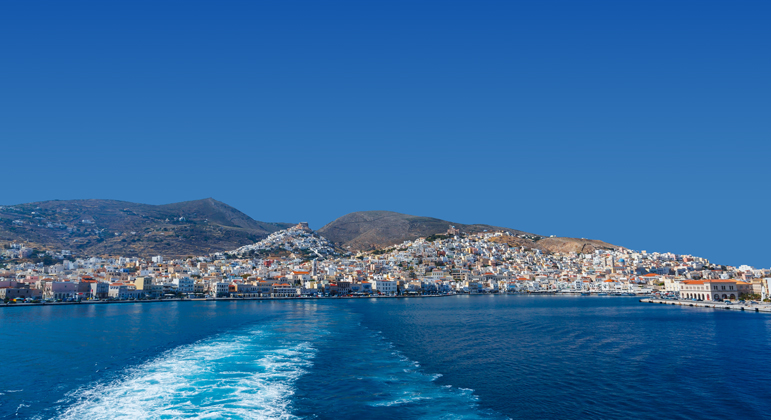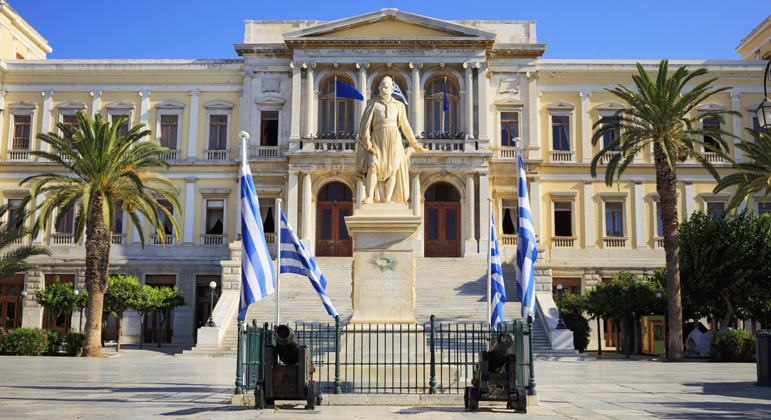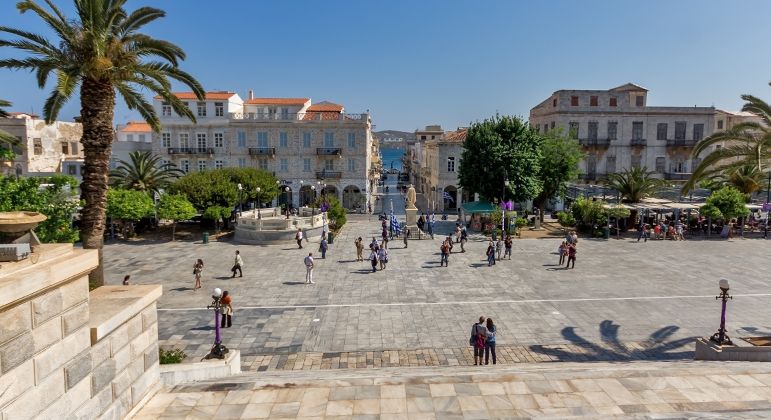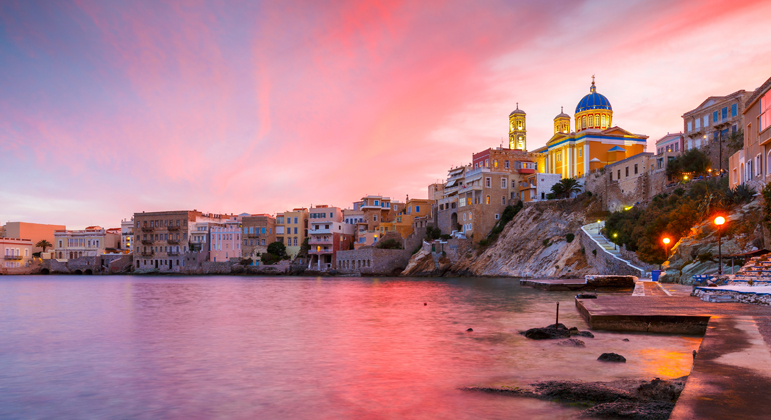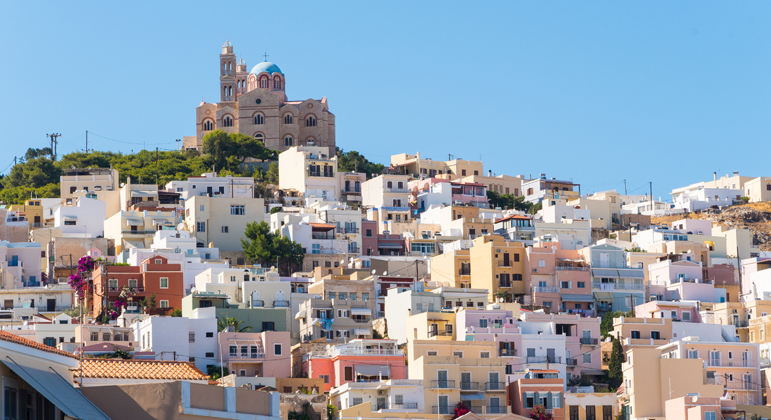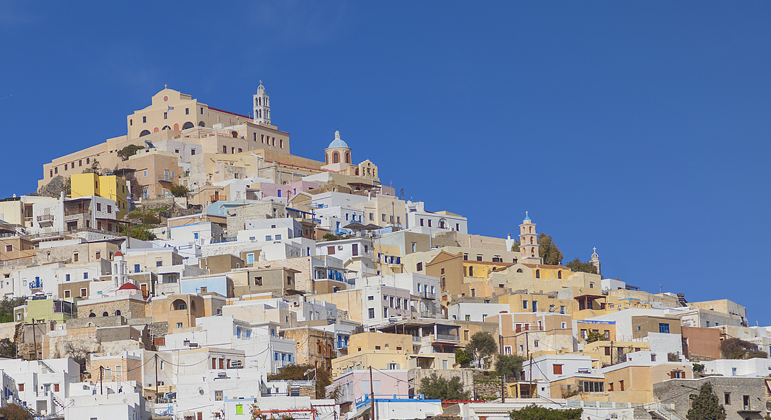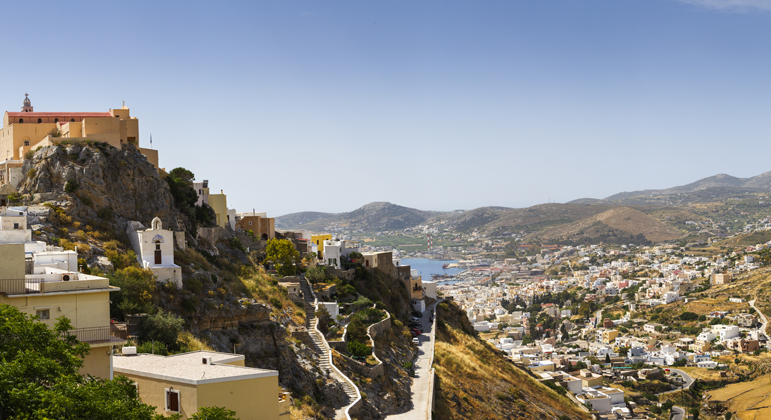Syros is The Aegean’s Treasure Island
Everything about delightful, sunny Syros seems designed to amaze you and nothing about this island, which is at the geographical center of the Cycladic island chain, is ordinary. Syros was among the many Aegean islands included in the nascent Greek state in 1832. The elegant port city of Ermoupoli, which serves as the capital of the prefecture, was constructed mainly in the 1820s, during the time of the Greek War of Independence. It prospered enormously, something reflected in its proud neoclassical architecture. Of course, Greece means ancient history too: the name Syros comes from the Phoenician word for blessed or wealth, and the island was mentioned by Homer. There were pirates, Saracens, Venetians, the corsair Barbarossa… and others. When the Greek Revolution broke out in 1821, Syros absorbed Greek refugees from Aegean islands still under Ottoman occupation such as Chios and Psara, and these new arrivals greatly enriched Ermoupoli which took on the look and atmosphere of a small city of Western Europe. Even today the town keeps its character as one of the more unusual places in the Greek islands. Approaching by sea you’ll notice that two large hills dominate the port: one is the old town of Ano Syros, with the 13th-century Catholic cathedral of St. George at the very top (under Ottoman rule most of the inhabitants were Catholic). The other hill is crowned with a Greek Orthodox church. In cosmopolitan Syros, Catholics and Orthodox islanders celebrate Easter on the same day.
Read More
 International (US$)
International (US$)  EU (€)
EU (€)  Argentina (US$)
Argentina (US$)  Australia (AU$)
Australia (AU$)  Балканите (€)
Балканите (€)  Brasil (US$)
Brasil (US$)  Κύπρος (€)
Κύπρος (€)  Deutschland (€)
Deutschland (€)  España (€)
España (€)  France (€)
France (€)  Ελλάδα (€)
Ελλάδα (€)  United Kingdom (£)
United Kingdom (£)  Turkey (€)
Turkey (€)
